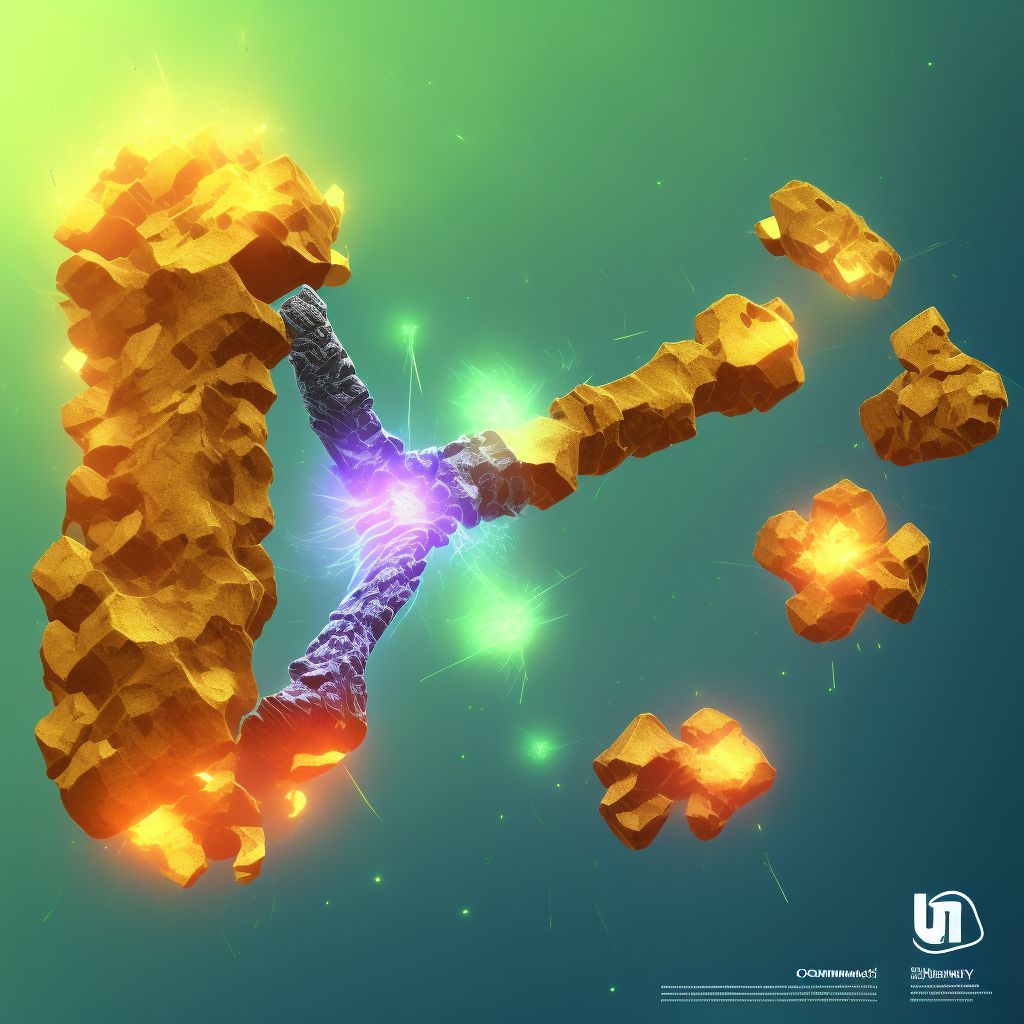
Displaced comminuted fracture of shaft of unspecified tibia, subsequent encounter for open fracture type IIIA, IIIB, or IIIC with nonunion Save
ICD-10 code: S82.253N
Disease category: S82.253: Displaced comminuted fracture of shaft of unspecified tibia
Displaced Comminuted Fracture of Shaft of Unspecified Tibia: Understanding the Nonunion
A displaced comminuted fracture of the shaft of the tibia is a severe injury that can lead to long-term complications if not properly treated. In some cases, the fracture may not heal correctly, resulting in a nonunion. This subsequent encounter for an open fracture type IIIA, IIIB, or IIIC with nonunion requires careful management to ensure the best possible outcome.
Nonunion refers to the failure of a fractured bone to heal within the expected timeframe. It can occur due to various factors, such as poor blood supply, infection, inadequate immobilization, or excessive movement of the fractured bone. In the case of an open fracture, where the bone penetrates the skin, the risk of nonunion is even higher.
To address a nonunion, medical professionals employ a comprehensive approach that includes thorough evaluation and a tailored treatment plan. However, it's important to note that this article will not cover specific treatment methods.
- Evaluation: The first step in managing a nonunion is to assess the patient's condition thoroughly. This typically involves a physical examination, medical history review, and imaging tests, such as X-rays or CT scans. By understanding the extent of the nonunion and identifying any contributing factors, healthcare providers can make informed decisions about the next steps.
- Stabilization: In many cases, stabilizing the fractured bone is crucial for promoting healing. This may involve surgical interventions, such as internal fixation with plates, screws, or rods. External fixation devices, such as frames or braces, may also be used to provide stability and support during the healing process.
- Stimulating Bone Growth: To encourage bone healing, various techniques can be employed. These may include bone grafting, where healthy bone tissue is transplanted to the fracture site, or the use of bone-stimulating devices or medications to promote bone growth.
- Monitoring and Rehabilitation: After treatment, close monitoring of the nonunion site is crucial. This includes regular follow-up appointments, imaging tests, and assessment of the patient's progress. Rehabilitation exercises and physical therapy may also be recommended to restore strength and functionality to the affected limb.
In conclusion, a displaced comminuted fracture of the shaft of the tibia can result in a nonunion, requiring specialized management. By following a comprehensive approach that includes evaluation, stabilization, bone growth stimulation, and monitoring, healthcare professionals can optimize the chances of a successful outcome. If you or someone you know is dealing with this condition, it's crucial to consult with a qualified healthcare provider for proper diagnosis and treatment.
Treatment of Displaced comminuted fracture of shaft of unspecified tibia, subsequent encounter for open fracture type IIIA, IIIB, or IIIC with nonunion:
Treatment Options for Displaced Comminuted Fracture of Shaft of Unspecified Tibia, Subsequent Encounter for Open Fracture Type IIIA, IIIB, or IIIC with Nonunion
Dealing with a displaced comminuted fracture of the shaft of an unspecified tibia, subsequent encounter for an open fracture type IIIA, IIIB, or IIIC with nonunion can be a complex and challenging situation. However, there ...
To see full information about treatment please Sign up or Log in